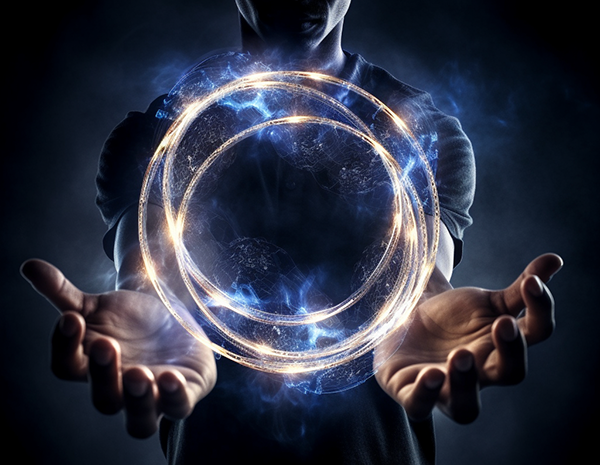
Qigong is the art of working with our ‘qi’ or energy and developing skill with it. ‘Qi’ means energy, and ‘gong’, means work or skill. Within this art, there are a variety of tools that we use as part of qigong practices to direct that energy so that we can create health and vitality within our lives.
This article will provide an overview of some of the many methods that we use for directing energy in qigong practice.
We can group these methods into four main categories:
- Mind
- Body
- Breath
- Other
There is a great deal of cross over between these categories, as a method used from one category will affect all of the others, and they end up working synergistically together to direct the energy, which we will discuss further towards the end of this article. Categorizing them in this way is simply for convenience in considering the many different elements that combine in qigong practice in different ways to direct our energy.
1. Using the Mind to Direct Energy
We will look at methods which use the mind as their primary mode of action first. While some qigong practices do not require any particular mental focus, in most practices the mind is engaged to a greater or lesser degree to direct the energy more effectively.
Awareness and Biofeedback
One of the most fundamental ways that the mind is used to direct our energy is simply through developing awareness. Once we have even a little awareness of our energy, we are able to tune into that and use our mind to direct the functions of our body to create more of what we sense. This initial awareness acts as a seed which we can then encourage to grow more strongly through a process of biofeedback. When we can feel the activity of the nerves, we can direct our body to make them more or less active, or to change the quality of that activity. When we can feel the warmth from our cellular activity, we can direct those cells to become more or less active according to our needs – and so on.
You can find a video of a very simple exercise you can use to start to become aware of your energy here.
Imagery and Symbolism
When we seek to direct our energy or change its qualities in a particular way, sometimes the most efficient way for us to communicate what we are trying to achieve is through imagery and symbolism. A single image or symbol can contain many different factors combined together, so by focusing on that imagery or symbol we are able to adjust many aspects of our energy all at once, something that would often prove very difficult or impossible if we were to try to concentrate on each element separately together. Symbolism is a shorthand way for us to focus on our energy and direct it in richer and more complex ways.
For this reason there is often a lot of imagery used within qigong practices. Some of the more common types of imagery include animals and elements within nature. We talk about Tigers, Cranes, Dragons, Rivers, Ocean Currents, Wood, Fire, and so on. Each of these symbols contains many aspects which influence our energy through our minds direction in our qigong practice.
Receptivity
This is a very subtle but important aspect of how we use our mind to direct energy within qigong practice. There is energy flowing and moving all around us all the time. A lot of this movement of the energy we simply do not engage with, we simply let it move on past without interacting with it. As we start to become more aware of energy in general, we can choose whether we wish to be receptive to it, or conversely to shut it out. When we choose to be receptive to that energy, we then start to interact with it more strongly.
2. Using the Body to Direct Energy
Sometimes people get the strange idea that when we work with energy it is somehow separate from our physical body. This is not the case, after all matter is simply a more dense form of energy than other types. Every aspect of our energy is strongly connected to our physical body and our physical reality. Energy affects our physical body, and our physical body affects our energy. Much of the energy we work with in qigong comes directly from the normal natural functioning of our body, such as the activity of our nerves, the movement of our blood, and our cellular respiration. All of these simple things combine together as part of our living ‘qi’, and stimulating one usually also stimulates the others as well.
Posture and Alignment
Particular postures and alignment are specified in many qigong practices. At the most basic level, these details about posture are often to ensure that pressure is released from nerves and blood vessels so that the nerve signals and blood, which are important contributing factors within our energy, can flow freely. Sometimes more sophisticated postures will also direct pressure on different parts of our body to create a stimulus and direct energy to or from that area.
Touch
This can include simple contact, or sometimes for vigorous rubbing or tapping. Contact with an area stimulates our touch receptors and draws our attention there, making it easier to direct our bodies resources into that area. More vigorous contact has a direct mechanical effect, stimulating physical movement and creating heat through friction which can stimulate the cells of the body to become more active, and the fluids to move more freely.
Sometimes touch is also used as a way to discharge energy, or to complete a circuit, allowing energy to flow through a particular pathway, or to a particular part of the body through the contact point.
Movement
Many qigong exercises include specific movements which not only stretch and move the external limbs of the body, but also massage the internal organs of the body – stimulating their activity and energy. A great example of this type of practice is the Twelve Rivers from Long White Cloud Qigong. This set massages the each of the internal organs in the body while also stimulating the meridian related to that organ at the same time. This is excellent for balancing posture, organ activity, and the emotions that relate to these.
Gaze
The gaze of the eyes is often used within qigong as a way to direct the attention to a particular part of the body. This then makes it easier to direct the energy internally to that part. In addition to this in some exercises the turning of the head and stretching of the neck involved in looking in different directions also reinforces this effect, as this loosens the area around specific nerves that relate to the area that energy is being directed to.
3. Using the Breath to Direct Energy
Specific breathing patterns are a key part of many qigong practices. Breathing is so closely connected to our living energy that the same Chinese character that is commonly used for ‘qi’ is also used for breath (氣).
Bridge Between Mind and Body
Part of what makes the breath so special when it comes to directing our energy, is that it has a unique role in bridging between our mind and body. Most of the functions of our internal organs operate unconsciously and we have very little natural ability to control them consciously. Breathing on the other hand is readily controlled both consciously and unconsciously. If you don’t think about it – generally your breathing will continue unconsciously, adapting to the changing demands put on it. But if you do choose to put conscious awareness on your breath, you can easily control it, changing its speed, depth, and even stopping breathing for short periods of time. In this way, working with the breath consciously we can influence all of the other unconscious functions of our body as well.
Regulation of Internal Functions
When we change the way we breathe, all of the other functions of our body tend to also change as a consequence. As a very simple example, when you breathe more slowly, this tends to cause the whole body to slow down and relax. The heart beat will slow down, the parasympathetic nervous system will become more active and so on. This has a big effect on the quality and movement of our energy.
Internal Compression
When we breathe freely and fully, our whole body expands and contracts with the breath. In a way it massages all of our organs from the inside with the movement of the breath stimulating their activity and energy. Further, when we combine deep fully breathing with specific external postures or movements, these direct this internal massaging from the breath to become concentrated and focused into specific parts of the body – directing the energy to become more active in these areas.
4. Other Methods of Directing Energy
The mind, body, and breath are the main tools used throughout qigong practice to direct our energy, but there are also a variety of other factors which are sometimes used.
Elements of Nature in Our Environment
Qigong provides a unique understanding of the elements of nature in the environment around us. Within qigong practice, sometimes these are used for their symbolic meaning. Practicing in the presence of one of the elements of nature can help us to remember their symbolic meaning, and direct our energy to copy those characteristics. For example practicing in the presence of water can help us to embrace the quality of letting our energy flow freely. Practicing in the presence of a mountain can help us to embrace the quality of having a higher perspective, and so on. But, the influence of the elements of nature on our qigong practice is not limited to just their symbolic value. To use the two examples already mentioned, in the presence of moving or falling water there will be an increased level of negative ions from droplet shear. This will have an influence on our energy when practicing in that environment. If we practice on top of a mountain, the air will be less dense than at a lower altitude, this too will affect the functioning of our organs, and so our energy.
There are of course many other energetic influences that come from the environment as well that can be used as part of efforts to work with an develop skill with our energy.
Colour
Different colours cause our body and energy to respond in different ways. For example, the colour red increases your heart rate, while the colour blue lowers it. The colour green relaxes and soothes the eyes, and so on. Sometimes different colours are used in qigong practice by simply visualizing them, to encourage the bodies energy to take on certain qualities in response to them. Other times the actual colour is used by introducing objects or clothing of a particular colour into the practice.
Sound Vibration
Sound vibration can be a particularly powerful way do direct the energy within our bodies and to change its qualities. Different types of vibration can cause our body to resonate in different ways, quite literally sending the energy of the vibration to different parts of our bodies. If you haven’t already seen it, check out our free mini course on emotional alchemy using sound. This is an excellent example of how different sounds stimulate different organs, releasing blockages and affecting the overall quality of our energy.
As well as using the sound vibrations from our own voice to direct energy, sometimes musical instruments are also used. With practice we can train ourselves to be more receptive to the vibration of the instrument to allow it to penetrate and direct our energy more effectively.
Directing Energy with Energy
Once we have even a little skill with our energy, we can begin to use that energy to direct even more energy within us. For example this might take the form of holding our hands above a part of our body – not touching it. The energy radiating from the palms of our hands then stimulates the tissues in that part of the body, causing them to become more active, and bringing even more energy to the area.
Synergy Between Methods of Directing Energy
Each of the methods discussed above are effective by themselves in directing our energy, but they become even more powerful when we use them in combination together. Slowing down and deepening our breath is very effective for relaxing our energy and starting to massage the organs internally. When we combine this with standing or moving in particular ways, this becomes even more effective at stimulating the energy and directly it to specific parts of the body. When we add in mental focus and awareness, we can use the biofeedback of our sensations of energy to further strengthen the activity in the area. If we then also choose to practice an exercise which stimulates the energy of the kidneys, while standing next to a river… it can become even more powerfully effective.
For this reason qigong practices often include a variety of methods within a single exercise. By combining the mind, body and breath together, sometimes along with other methods as well, there is a synergistic effect on our energy.
Conclusion
I hope you have enjoyed this overview of some of the many different methods of directing energy used in qigong practice. If you are new to qigong, you might want to check out some of our other articles about:
- What is Qigong?
- What is Qi?
- The History and Origins of Qigong
- What are the Benefits of Qigong?
- How Dangerous is Qigong?
Also, one of the best ways to really get an understanding and appreciation of qigong is to actually try doing it! We have a range of online qigong courses available that will guide you through not only how to do the qigong practice, but will also help you to understand exactly how each qigong exercise that you practice works. You can find a menu of our available courses here.
If you would like to stay informed of the latest news and updates from Long White Cloud Qigong, as well and hearing whenever new informative articles like this one become available, signup to our mailing list below.
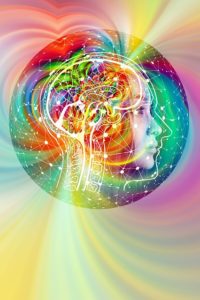



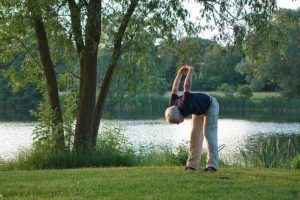

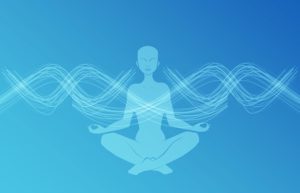
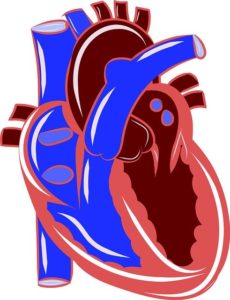




1 Comment. Leave new
I really, really appreciate this article. It is soft and gentle and kind. I have been practicing for about 2 years, and I can and do feel the beauty of subtle change in my energy when practicing. There is so much more that I would like to know and understand as to how to really get the most out of my practice, with specific goals in mind, etc. My feeling is that long white cloud can gently help me move forward in this way. Thank you.